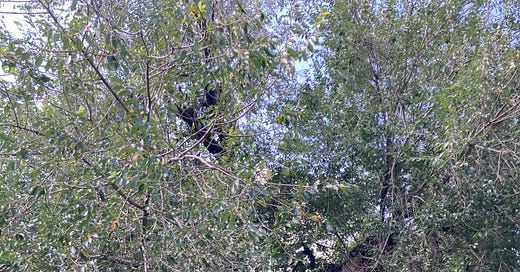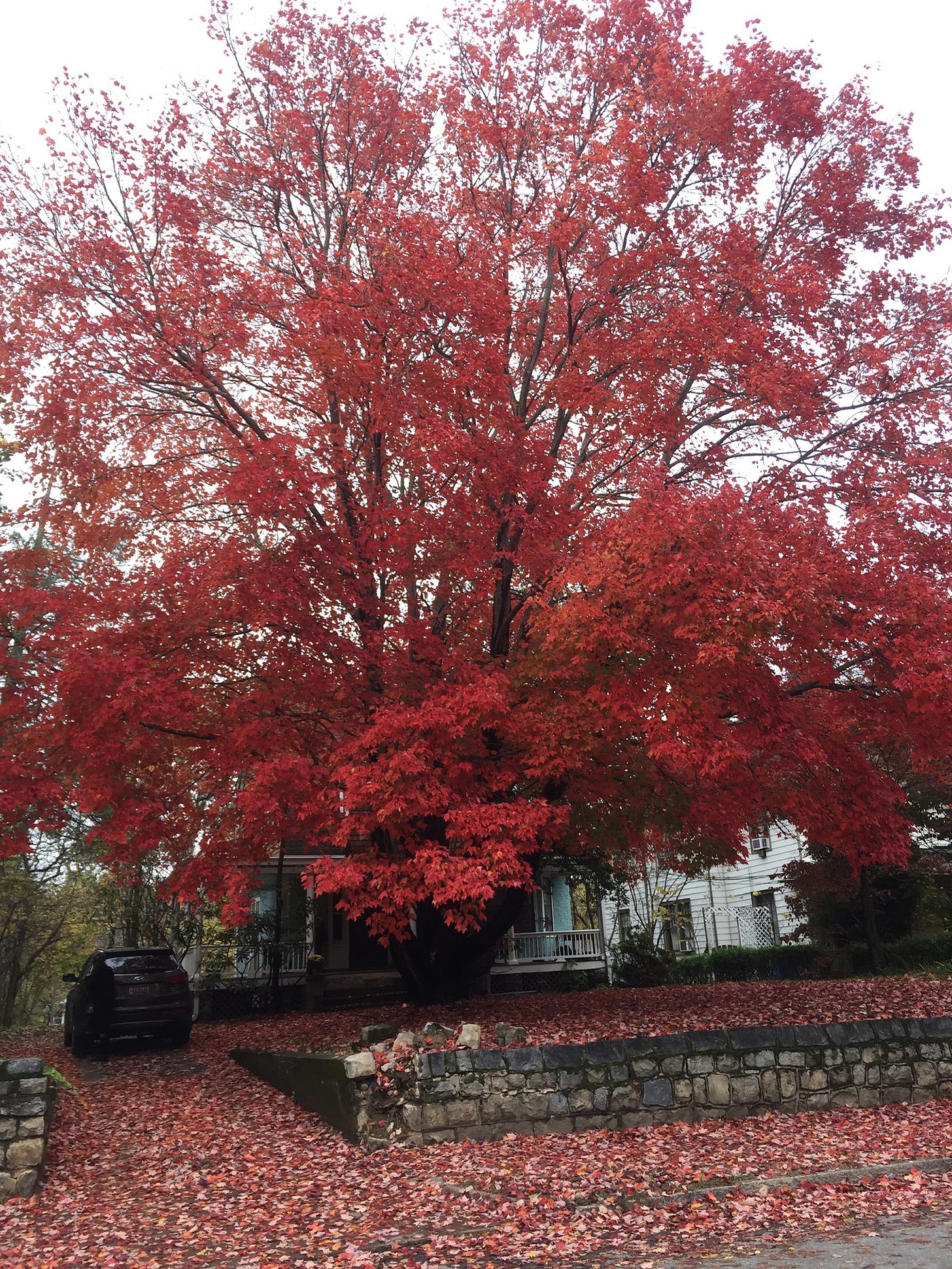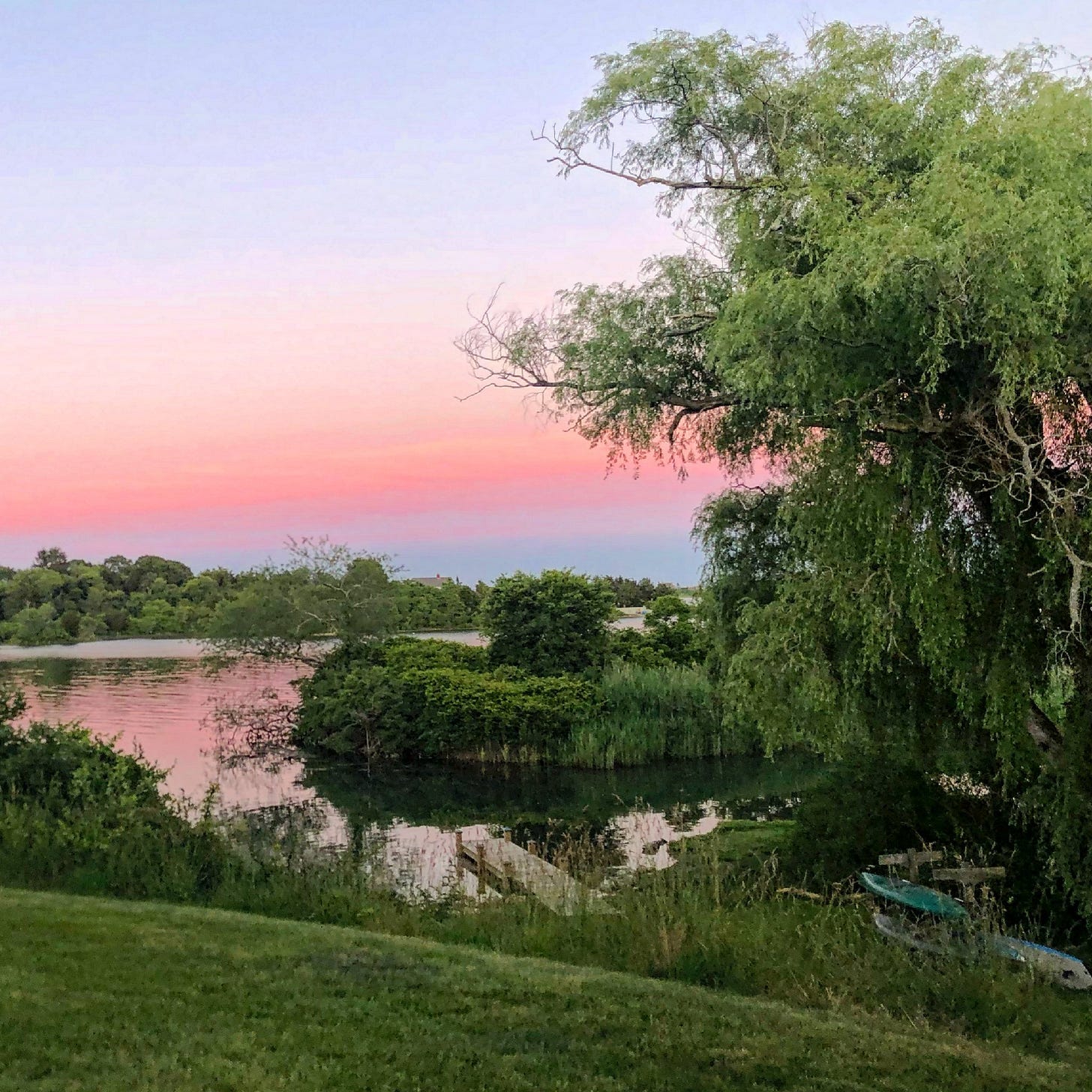This has been a busy week—I’m guessing for you too. Sunday seems like a perfect day to slow down and admire the trees in our lives.
Mamie’s elm in Walkerton, which “lived to tell the tale” after a recent supercell storm:
Taylor’s Asheville maple, which turns “vibrant red in the fall, but only for about a week,” she tells us. “I’m already excited for its brief but urgent transformation.”
Hartford’s Rhode Island willow tree, captured at sunset. He writes, “it's toweringly tall and provides a habitat for many birds. It's getting older, and we haven't trimmed out the deadwood because it provides that all-important habitat (where birds can perch and see what's coming or going or down in the water).”
Hartford’s comment made me remember this terrific New York Times article by Margaret Roach, about how even our dead and dying trees have a continued, important purpose in our yards and forests as “snags,” or wildlife trees. Roach writes:
As long as they pose no danger to people, power lines or structures, dead and dying trees have an afterlife as a place for wildlife to nest or den; a lookout perch for a raptor seeking dinner; a food source for insects (who, in turn, feed the masses). Lichen, fungi and mosses grow on them, providing food and shelter.
Removing their tons of biomass deprives the food web of all of that life-giving potential. According to the National Wildlife Federation, the removal of dead material from forests can mean a loss of habitat for up to a fifth of the animals in the ecosystem, and more than 1,000 species of wildlife nationwide use snags. That includes woodpeckers, whose excavating efforts in dead trees help not just their own species.
“More than 40 bird species in North America depend on woodpecker carpentry for their nest and roost cavities,” writes Stephen Shunk in “Peterson Reference Guide to Woodpeckers of North America.” These secondary nesters — among them, tree swallows, bluebirds, titmice, wrens, flycatchers and some owls and ducks — cannot create cavities, but quickly adopt abandoned holes.
“Having a more healthy woodpecker population buys you more than just woodpeckers,” John Marzluff, an ornithologist and urban ecologist at the University of Washington, told me in an interview a few years ago on the publication of “Welcome to Subirdia,” his book about rich habitat opportunities in developed areas. “But they need dead trees.”
I love watching the woodpeckers and squirrels in the wildlife tree down the hill from my desk window. Bea and Harriet and I are also really into finding tree cavities where animals live.
Please keep your tree photos coming (belleboggs@gmail.com)! More on Tuesday about tree communication and our favorite tree ID books.







oh my stars i am so happy and reassuredby your post about dying trees as there are definitely parts of my Elm that are … questionable ? but that tree has a will to live to tell the tale!
My favorite trees are Redwoods. I have sprout growing in a big pot in my backyard. I'm almost 70 so will not live to see it grow very tall, but when it gets too big for its pot, I'll take it to the Redwood Forest and plant it among its elders. There's book I love I think Bea would love called The Wild Trees, by Richard Preston. https://www.penguinrandomhouse.com/books/133844/the-wild-trees-by-richard-preston/